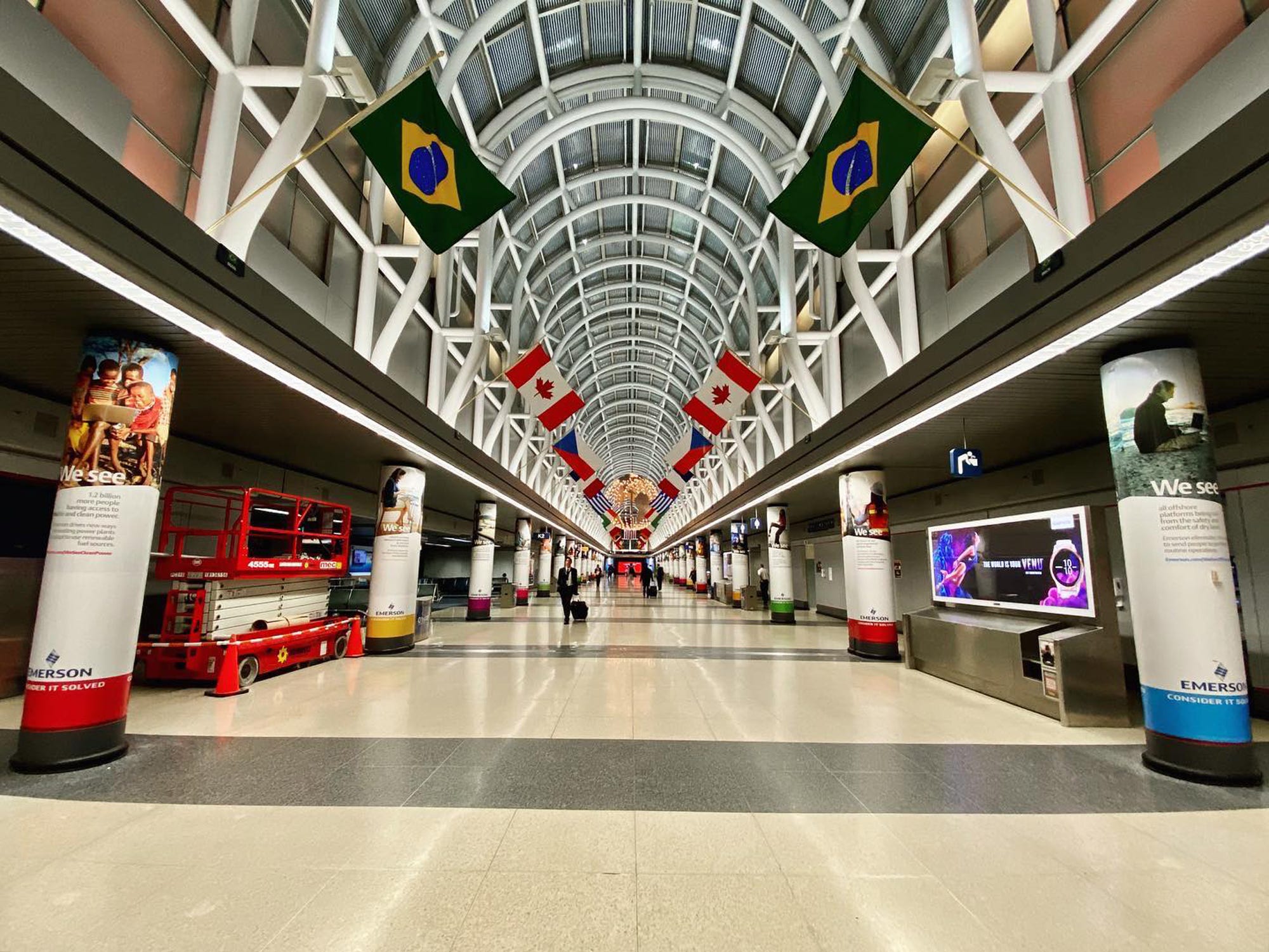- The newly passed CARES Act requires airlines to maintain certain levels of pre-March 2020 air service even as passenger demand dwindles.
- Despite the raging pandemic and stay at home orders, air travel remains the quickest form of transportation and is used by medical professionals and other essential workers to get where they’re needed.
- With non-essential travel limited, airports have become deserted and aircraft are flying with only handfuls of passengers if any.
- Visit Business Insider’s homepage for more stories.
Nowhere has the effect of COVID-19 been more pronounced in the US than the country’s transportation system, especially its largest airports and the aircraft still flying.
Once vibrant, bustling centers for the facilitation of travel have been reduced to ghost towns operated by skeleton crews serving the few remaining flights that have yet to be cut by airlines.
Provisions of the Coronavirus Aid, Relief, and Economic Security Act, or the CARES Act, require of the airlines that apply for federal aid maintain minimal air service.
The law requires that airlines “maintain scheduled air transportation service as the Secretary of Transportation deems necessary to ensure services to any point served by that carrier before March 1, 2020.”
Especially in a time of crisis, airlines fly crucially needed cargo and maintain national connectivity, as stated in the newly-adopted law.
"The Secretary of Transportation shall take into consideration the air transportation needs of small and remote communities and the need to maintain well-functioning health care and pharmaceutical supply chains, including for medical devices and supplies," the CARES Act includes.
Take a closer look at the current state of airports and aircraft amid a pandemic.
Normally the third busiest airport in the US, Chicago's O'Hare International Airport is now a ghost town as the virus has decimated demand.

The iconic flag concourse at the airport is shown here empty at rush hour.

A major hub for American Airlines and United Airlines, the evening rush in Chicago would typically be when passengers crowd the airport getting ready to board international flights to Europe, now largely restricted by governments on both sides of the Atlantic Ocean.

With both carriers significantly cutting capacity both on international and domestic routes, their terminals in the Windy City remain stagnant.

Chicago has only seen a fraction of COVID-19 cases compared to other major cities, with cases in the city topping out at around 9,000.

Source: City of Chicago
Nonetheless, travel to, from, and through the city's primary international aircraft continues to dwindle.

In New York, empty roadways are now a common sight as the few airlines left have moved terminals as part of the airport's attempt to consolidate operations in a handful of buildings.

Even with the moves, Terminal 8 at JFK lies largely dormant as international flights have evaporated and only a handful of domestic routes operated by tenant American Airlines remain.

American Airlines has largely shifted to cargo-only flights from its New York gateway.

The world's largest airline has been reduced to only a handful of flights to the country's most powerful city, which has been one of US' hotspots for the virus.

New York has been among the hardest-hit cities in the country, with around 6,000 deaths due to COVID-19 and nearly 200,000 reported cases statewide.
Source: City of New York
Terminal 8, in particular, has been largely impacted as the terminal primarily sees flights to Europe and Asia, both of which were restricted by presidential travel bans. Some international flights remain as JFK is an approved CDC entry airport.
This is the scene at Las Vegas' McCarran International Airport where operations have been largely reduced as tourism numbers have dropped sharply.

Source: Fox News
The main gateway to Sin City remains largely empty despite cases of COVID-19 not yet topping 3,000 in Nevada. The airport's control tower was recently closed after facility personnel tested positive for the virus, leaving aircraft on the ground to fend for themselves when taxiing, arriving, or departing.

The airport's famous gaming machines have also been off-limits per a state mandate against gaming while the pandemic rages.

Source: ABC News
In Denver, the infrastructure remains in place for an empty security checkpoint despite non-existent lines in the normally jam-packed central terminal building.

The airport is the Rocky Mountain hub of United Airlines, which has reduced capacity by over 60% in April.

Source: United Airlines
Even the country's busiest airport, Hartsfield-Jackson Atlanta International, is eerily quiet. Its largest carrier, Delta Air Lines, has shifted to cargo-only flights.

With passenger terminals empty, the airport has lent Delta its runways and taxiways to store excess aircraft to ride out the crisis.

Ticket counters remain similarly empty and largely unstaffed as airlines offer voluntary layoffs for employees in an effort to preserve cash flow.

Some empty ticket counters, however, will remain that way as the airlines that once staffed them have collapsed due to the crisis, as was the case for Ravn Alaska.

The regional carrier served small communities in Alaska before its collapse, leaving some areas of the state without their lifeline.
Flight crews remain the few remaining occupants of airport terminals as some flights continue to go, even with little to no passengers.

Passenger-facing crew, however, are donning personal protective equipment as they serve on the frontlines of the pandemic...
Although aircraft load factors have been steadily low as passengers avoid air travel.

Airlines are adopting new cleaning procedures, including fogging, to ensure that aircraft are safe for the passengers that still choose or need to fly.

Empty flights are virtually guaranteed but airlines are required to keep flying some services under the CARES Act in order to receive federal funds.

Though airlines are applying for exemptions to the rule, air service in the US remains a necessity and some flights must go to maintain connectivity in the country, even empty ones.

Only 10 passengers took the near-3-hour journey from New York to Miami on this Boeing 777-200 capable of seating around 275.

For many of these flights, it's the cargo under the passenger seats that make them worth flying with wide-body jets offering the greatest cargo capacity.

Social distancing on these flights is more easily achieved with no shortage of empty seats and rows.

On this flight from Washington to New Orleans, only one passenger showed up to fly on this 70-seat regional jet.

Source: Reuters

